Tom's Guide Verdict
You won't feel short-changed with the Xiaomi 13 Pro's hardware. Three 50MP rear cameras is more than enough for anyone, as is the speedy 120W included charger and the Galaxy S23-beating battery life. Once again it's sad to see such a good phone not go on sale to American customers. Plus, the asking price and some performance issues may have you thinking twice as well.
Pros
- +
Triple 50MP cameras
- +
Fast 120W charging
- +
Great battery life
Cons
- -
Gaming performance falls behind rivals
- -
No U.S. availability
Why you can trust Tom's Guide
Every box I could want to be ticked in a premium smartphone is checked by the Xiaomi 13 Pro. It’s got the hardware and software I want. So the question shifts from “is this phone good?” to “why should I buy this instead of a Samsung or Google Pixel?”
Fortunately, the Xiaomi 13 Pro, freshly announced at MWC 2023, provides some good answers. Its trio of 50MP main cameras, its fast 120W charging and lengthy battery life speak for themselves in our testing. But equally, its limited availability and high price make it a tougher sell. So does its performance, which can’t match up to its rivals in quite the same way its other features can.
Read on for our full Xiaomi 13 Pro review, and you’ll see the kind of heavy-duty, camera-focused flagship is worth your consideration, and why we think it's a new contender for our best Android phones list.
Xiaomi 13 Pro: Specs
| Row 0 - Cell 0 | Row 0 - Cell 1 |
| Starting price | £1,099 |
| Display | 6.7-inch QHD OLED (3200 x 1440) |
| Refresh rate | 1 - 120Hz adaptive |
| Main cameras | 50MP main (f/1.9), 50MP ultrawide (f/2.2), 50MP 3.2x optical telephoto (f/2.0) |
| Front camera | 32MP selfie (f/2.0) |
| Chipset | Snapdragon 8 Gen 2 |
| RAM | 12GB |
| Storage | 128GB / 256GB |
| Battery | 4,820 mAh |
| Charging | 120W wired, 50W wireless |
| Software | Android 13 with MIUI |
| Size | 6.41 x 2.94 x 0.33 inches (162.9 x 74.6 x 8.38mm) |
| Weight | 8.07 ounces (229 grams) |
| Dust/water resistance | IP68 |
Xiaomi 13 Pro: Price and availability
Xiaomi doesn't sell its phones in the U.S., but you can at least get them in the U.K. For customers on the east side of the Atlantic, you can expect to pay £1,099 for the 13 Pro, slightly more than you would have paid for the Xiaomi 12 Pro last year.
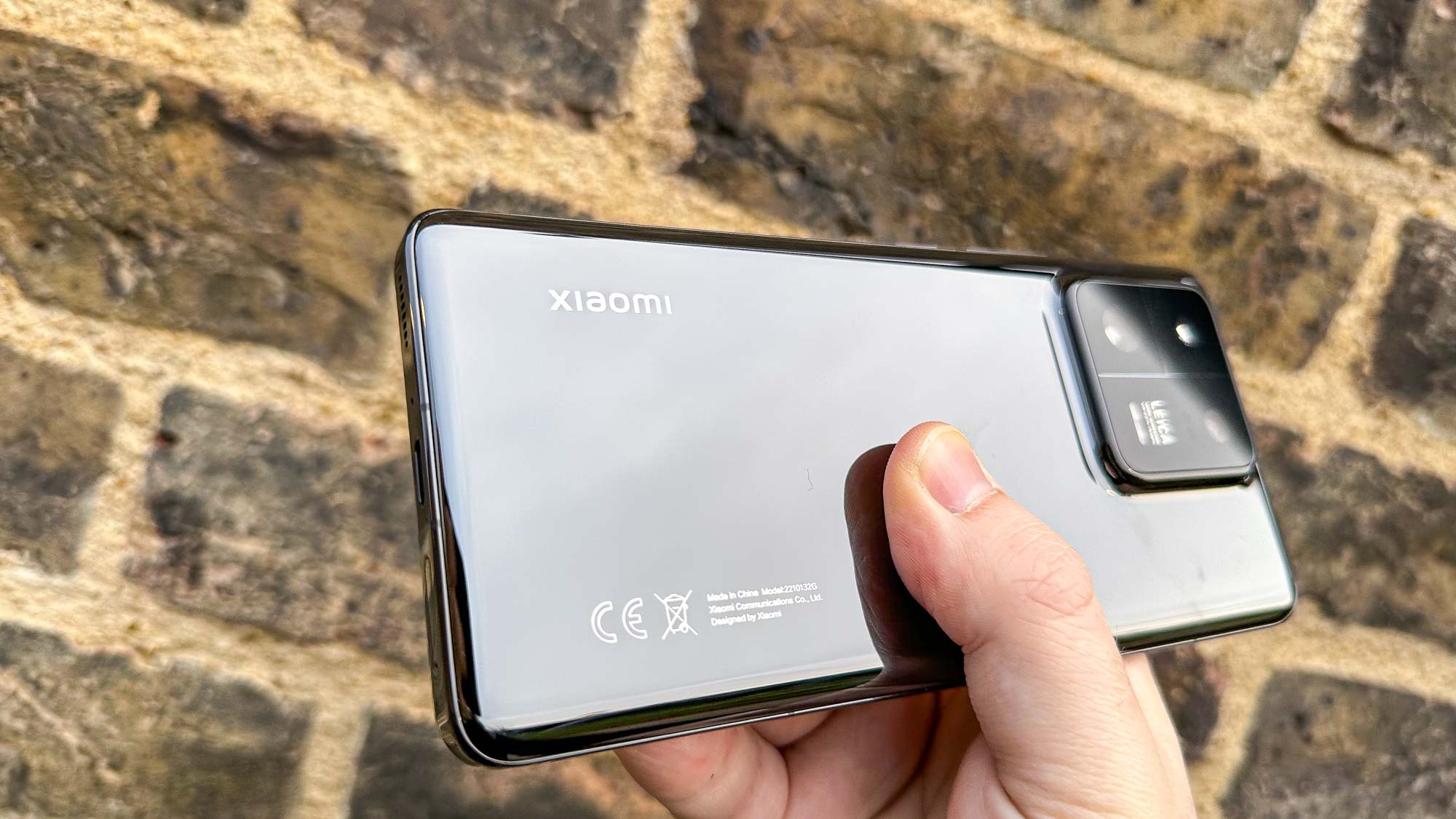
With this pricetag, the Xiaomi sits at a strange spot in the market. It's more expensive than a £1,049 Galaxy S23 Plus, but does feature some tricks that the Samsung can't match. However, the Galaxy S23 Ultra is just £150 more, and the iPhone 14 Pro Max £100 more, which are arguably two more tempting phones.
You do at least get 256GB default storage for your money on the Xiaomi, as you do on the Galaxy S23 Plus and Ultra. The iPhone 14 series still starts with 128GB, which is starting to look a little stingy.
There's also the Pixel 7 Pro to consider. At £849, it's much cheaper than any of these other phones, but can still compete with them directly when it comes to display and camera quality.
Get instant access to breaking news, the hottest reviews, great deals and helpful tips.
Xiaomi 13 Pro: Design
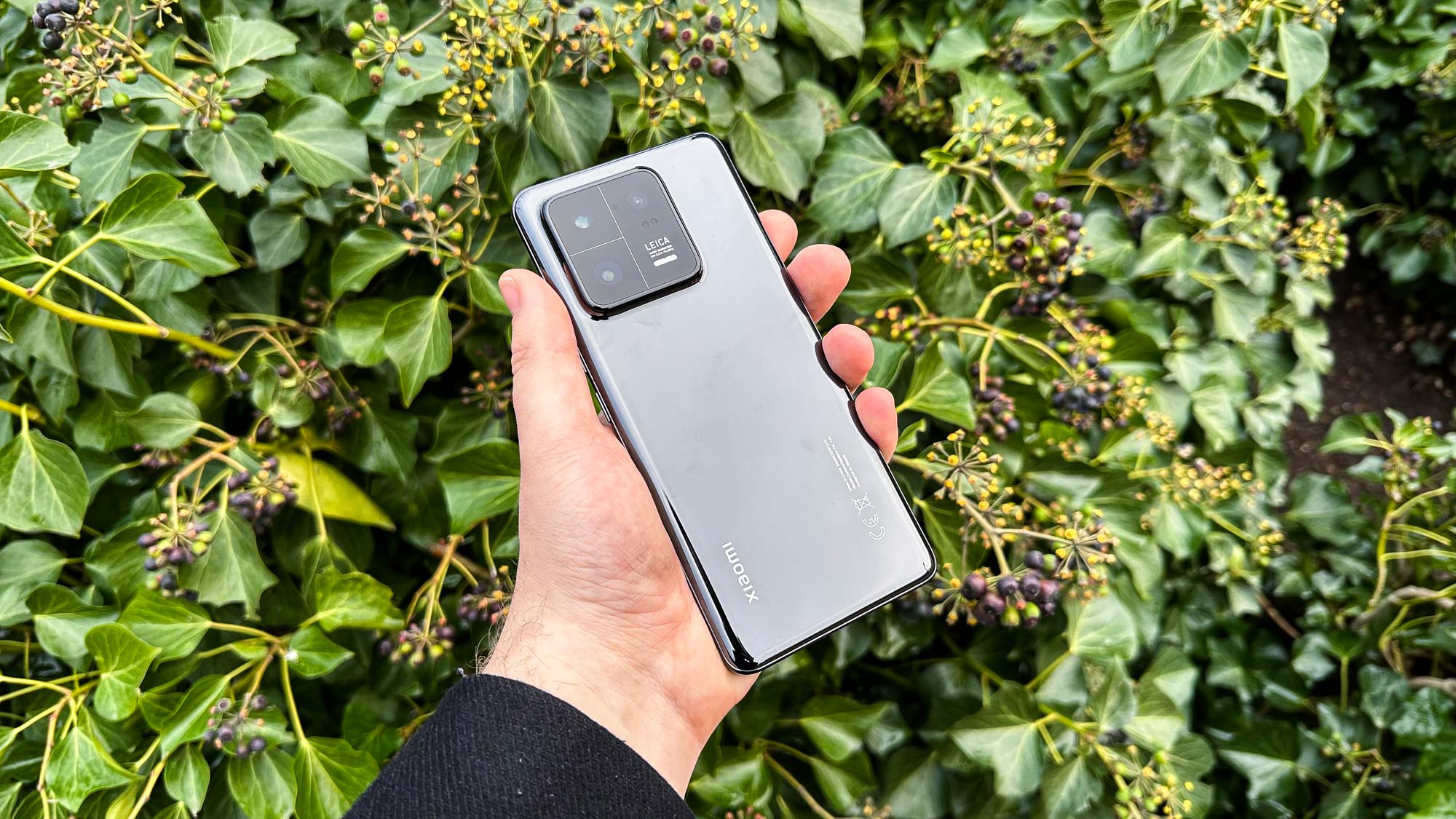
Xiaomi seems to have firmly settled on its basic design for its Pro phones with the 13 Pro, using a curved 6.7-inch display and a grid-like camera block on the back once again. The camera block has a slightly different flavor this time because of its rounded sides which blend more smoothly into the back of the phone, which helps give the 13 series, including the 13 Pro, a bit of its own identity still.
For materials, Xiaomi went with Gorilla Glass Victus for the display, not the latest Victus 2 or the older Victus Plus, but still a flagship-worthy level of protection. For the back, it chose a "bio-ceramic" material instead of more glass, offering it in either Ceramic Black (pictured) or Ceramic White. The black finish I tested gives the phone a unique and luxurious feel in your hand, but also is easily smudged up with fingerprints.
The final feather in the 13 Pro's durability cap is its IP68 dust/water resistance rating. You'll find this on the majority of flagship phones, but it's still nice to know that this handset won't suffer too badly if if ends up briefly submerged.
Xiaomi 13 Pro: Display

As for the screen, the Xiaomi 13 Pro offers a 1-120Hz adaptive refresh rate and a QHD resolution, much like other top Android phones. Comparing it to a Galaxy S23 Ultra with the Tetris Apple TV Plus trailer playing, the Xiaomi's colors were not quite as saturated, and it was not quite as bright at its maximum, but it's still a perfectly pretty flagship panel.
| Row 0 - Cell 0 | Xiaomi 13 Pro | Galaxy S23 Ultra | iPhone 14 Pro Max | Google Pixel 7 Pro |
| HDR brightness (average) | 1,087 nits | 1225 nits | 1275 nits | 927 nits |
| DCI-P3 color gamut coverage | 78.6% (Original) / 113.3% (Vivid) | 112.2% (Natural) / 193% (Vivid) | 83.2% | 74.3% |
| Delta-E color accuracy (lower is better) | 0.21 (Original) / (0.33 (Vivid) | 0.3 (Natural) / 0 (Vivid) | 0.26 | 0.28 |
In testing, we found that the Xiaomi's display offers a Delta-E score for color accuracy as low as a 0.21, a 113.3% coverage of the DCI-P3 color gamut and a maximum brightness of up to 1,287 nits. Those scores allow the Xiaomi 13 Pro to trade blows with the iPhone 14 Pro Max and Pixel 7 Pro, but don't beat the reigning king of smartphone displays, the Galaxy S23 Ultra.
Xiaomi 13 Pro: Cameras
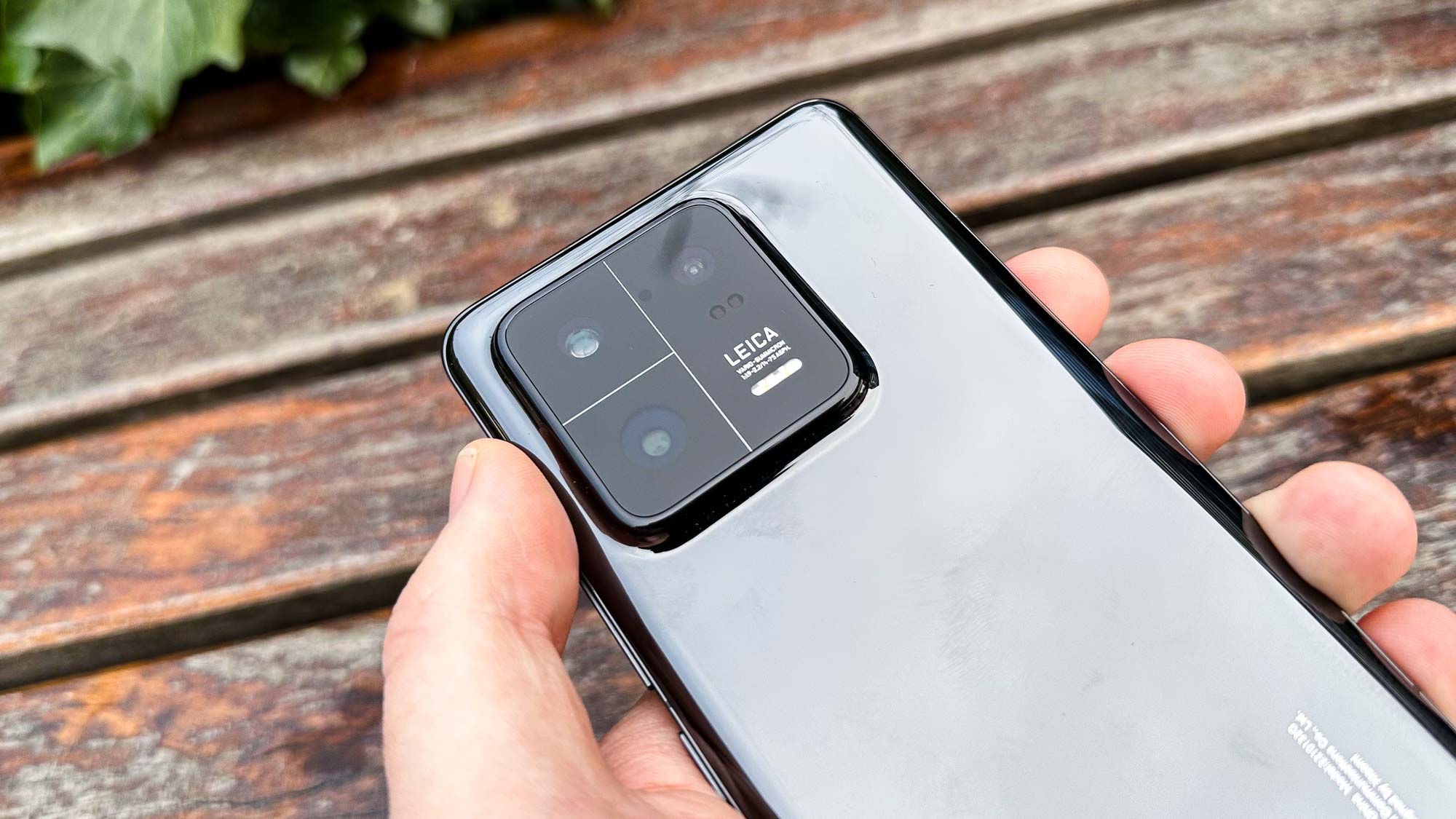
The 13 Pro cameras are designed to impress with three 50MP sensors on the back, covering main, ultrawide and telephoto duties. The main camera deserves extra special attention since it contains a 1-inch sensor, the same size as some regular DSLR cameras.
The main camera, as we can see in this shot of London’s Coal Drops Yard versus the iPhone 14 Pro Max, captures plenty of light in its large sensor and gives us a nice colorful image The iPhone sharpens the image more and offers the brighter picture of the two, which helps bring out some details like the lettering on the shop signs.
In night mode outside Kings Cross railway station, the Xiaomi does particularly well. The glow of the lights hung in the tree is subtler than in the iPhone image, giving a more true-to-life impression. It’s a brighter image overall that captures some of the blueness of the night sky, which I don’t mind the look of here. I know in some shots I’d prefer the moodier night mode of the iPhone.
One extra setting for the main camera we’ll look at is the Xiaomi 13 Pro’s color profiles. You can pick from either Leica Vivid or Leica Authentic in the app, and switch at any time. I took the rest of the images you see in the Vivid color profile, which appropriately seems to up the color saturation significantly compared to the Authentic version of this market sign shot.
Moving now to the ultrawide lens and the Galaxy S23 Ultra as our comparison device, we see the Xiaomi’s depiction of this piece of public art is lacking brightness and color. It reduces the definition of the more distant bars of the sculpture, something the Samsung seems to have had no trouble doing while still keeping the foreground in focus and attractively hued.
The Xiaomi 13 Pro's telephoto has a 3.2x optical zoom, slightly outdoing the zoom on the iPhone 14 Pro, but not matching up to the Galaxy S23 Ultra's maximum 10x optical zoom, or the Pixel 7 Pro's 5x magnification. The Xiaomi does have the 50MP megapixel advantage, but that doesn’t help in this 10x shot of the Samsung sign at CDY. It’s remarkable how much color and definition the reflections lack in the Xiaomi image.
Comparing the 3.2x telephoto against the iPhone’s 3x telephoto with an image of a restaurant shot from across a canal, we see how much difference megapixels can make. Not only does the Xiaomi image offer richer colors, it is much more detailed, thanks to the 50MP sensor, versus the 12MP iPhone. (You can shoot in 48MP mode on the iPhone 14 Pro if you use ProRAW mode.)
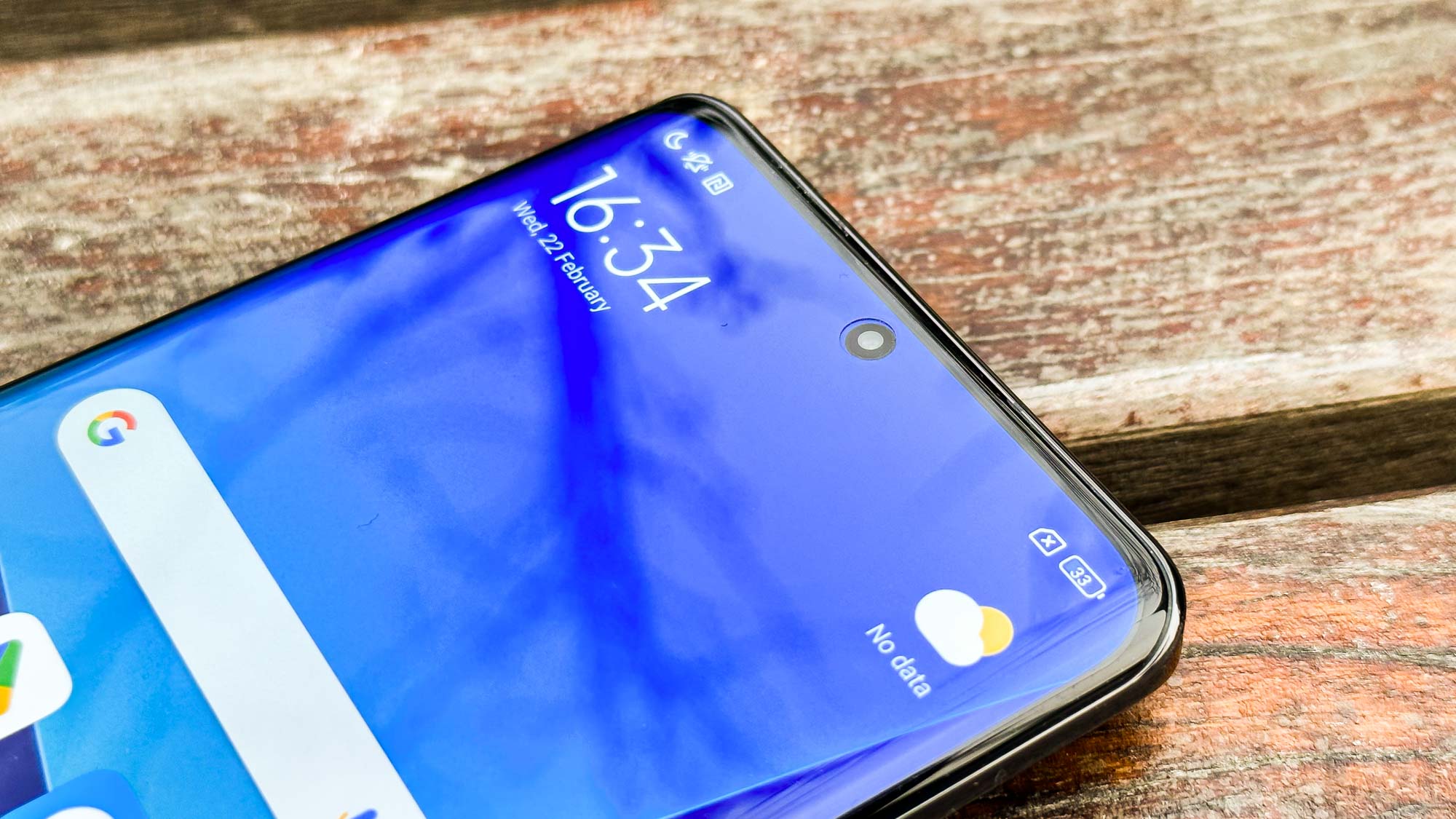
Moving around the front of the Xiaomi 13 Pro, the punch-hole selfie camera has a 32MP sensor. It took a brighter and less saturated portrait selfie of me compared to the Galaxy S23 Ultra, a phone noted for its saturated photo coloring.
We also see that while the Galaxy S23 Ultra didn’t manage to capture my glasses fully in the portrait cutout (despite it doing this well in previous testing) the Xiaomi does a worse job of figuring out where my frames end and the background starts.
While I didn’t have time to test everything in my brief time with the phone, other features the Xiaomi 13 Pro promises include 8K video recording, 4K video at up to 60fp, 4K night mode video and 10-bit RAW photography.
Xiaomi 13 Pro: Performance
Xiaomi certainly didn't skimp on the 13 Pro's power. Running the show is a Snapdragon 8 Gen 2, with 12GB RAM and the option of 128GB or 256GB storage. That matches or beats what you get by default with rival Android phones.
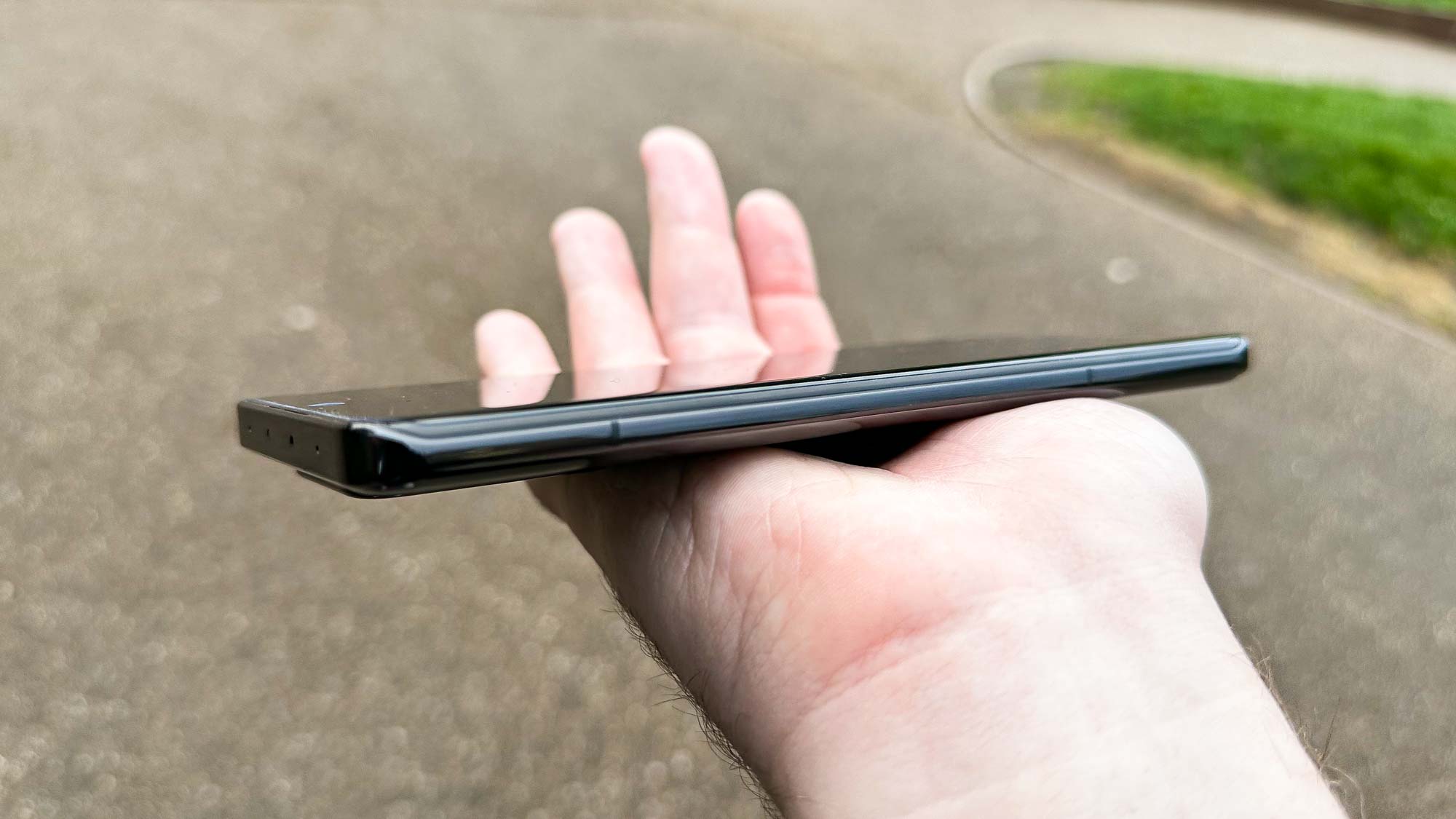
Compared to other similarly priced phones, the Xiaomi performs quite well. It beats the Galaxy S23 Ultra and its customized Snapdragon 8 Gen 2 for Galaxy chip, and the Tensor G2-powered Pixel 7 Pro on the Geekbench CPU benchmark. No doubt the 12GB default RAM helps against the Galaxy S23 series, as Samsung only provides 8GB in the basic models.
For the other tests however, including GPU and video transcoding benchmarks, the Xiaomi falls behind the Samsung and Google phones. It also doesn’t win in any category against the iPhone 14 Pro's A16 Bionic chip, the current phone performance champion. You can see the full results in the table below.
| Row 0 - Cell 0 | Xiaomi 13 Pro | Galaxy S23 Ultra | iPhone 14 Pro Max | Google Pixel 7 Pro |
| Geekbench 5 (single-core / multi-core) | 1,484 / 4,934 | 1,396 / 4,882 | 1,882 / 5,333 | 1,060 / 3,046 |
| 3DMark Wild Life Unlimited (score/fps) | 11,170 / 66.87 | 14,611 / 87 | 8,652 / 74.03 | 6,725 / 40 |
| 3DMark Wild Life Unlimited (score/fps) | 2,898 / 17.33 | 3,788 / 22 | 2,792 / 16 | 1,834 / 11 |
| Adobe Premiere Rush time to transcode (mins:secs) | 0:42 | 0:39 | 0:30 | 0:39 |
One other extra that Xiaomi's crammed in is support for the latest Wi-Fi standard, Wi-Fi 7. You'd be hard-pressed to find a router or other devices using this standard just yet, but it's an excellent bit of future-proofing for the 13 Pro to offer.
Xiaomi 13 Pro: Battery and charging
Compared to other phones in its category and of its size, the Xiaomi 13 Pro doesn’t offer quite as much battery space, featuring a 4,820 mAh cell rather than the more typical 5,000 mAh like you see in the Galaxy S23 Ultra or Pixel 7 Pro.
Does that gap matter though? In our custom battery life test, which makes phones constantly load web pages over LTE until they run of juice, the Xiaomi lasted 12 hours and 24 minutes, and as long as 13 hours and 35 minutes when locked to a 60Hz refresh rate.
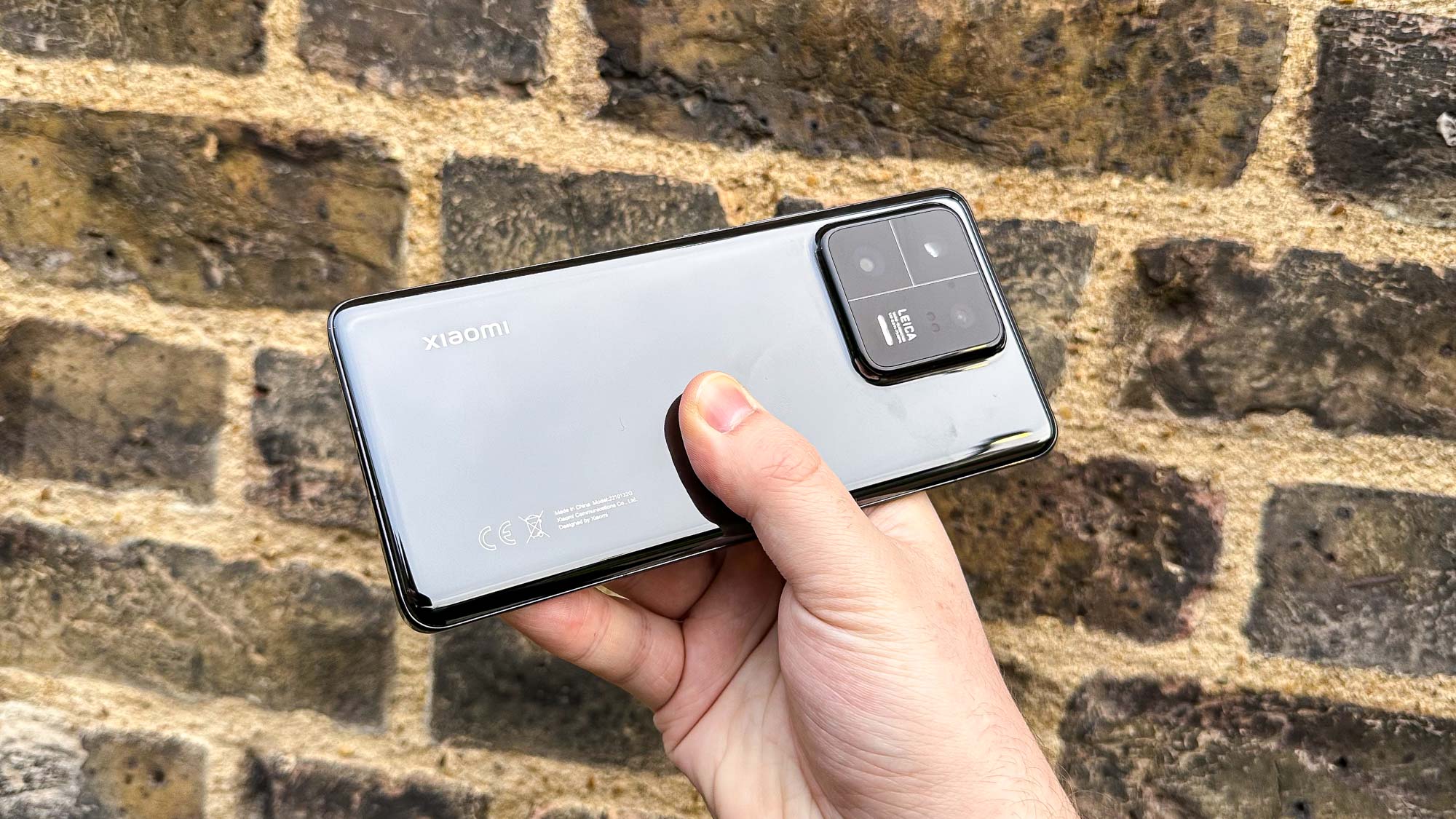
That’s a tad better than the Galaxy S23 Ultra in the same 60Hz / adaptive tests, despite the Samsung’s larger battery apacity. The Xiaomi also comes out well ahead of the Pixel 7 Pro, but still can’t quite match the champs of phone battery life like the iPhone 14 Pro Max or Asus ROG Phone 6.
In addition to a long-lasting battery, the Xiaomi 13 Pro also gets super-fast 120W wired charging and 50W wireless charging. We weren't able to try the wireless charging speed since that requires a Xiaomi-made charging pad, but with the included 120W power brick, the 13 Pro was able to fill up to 64 % in 15 minutes and to full in 26 minutes.
That's fast, beating its Samsung, Google and Apple competitors by a considerable margin, but it’s not as fast as what Xiaomi promises (full in 19 minutes). I assume this is because we perform our charging test from 0% rather than 1%; a small percentage difference that can have a major effect on overall charging speed
Xiaomi 13 Pro: Software and special features
Android 13 in the guise of Xiaomi's MIUI changes a lot of Android's basic look, in a way that makes things a little less familiar but a bit more friendly-looking at the same time. A lot of Android phones resemble each other in various ways, but at least with the screen on, there's no mistaking the stylish rounded icons and neatly laid-out menus and settings of the 13 Pro.
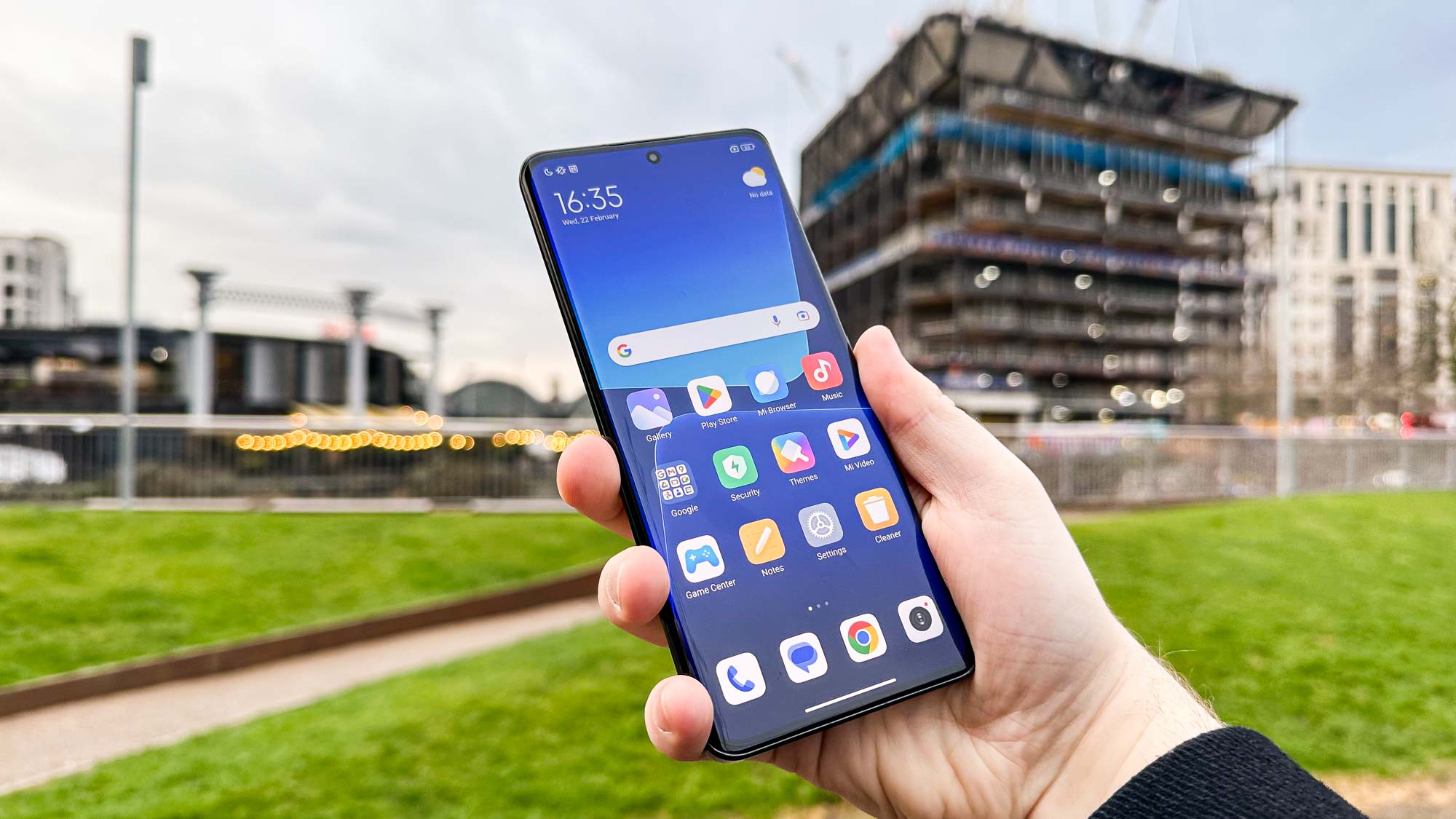
Xiaomi does pre-install a lot of apps though. That includes things you'd expect like it own versions of staple features like an internet browser and email, but also social media apps like Facebook, TikTok and LinkedIn, Spotify, Booking.com and the Opera browser. That's a lot of stuff you may not want taking up space on your phone stuffed in there by default, although you can delete them all or banish them to the app drawer with a little time and effort.
There are still Xiaomi's usual positives to be found though. I particularly like how MIUI separates your quick settings and notifications via swiping on different sides of the display (like how iOS does it), for instance.
For updates, Xiaomi currently promises three years of full updates plus one extra year of security updates. This isn't that generous when you look at the four-year and five-year policies that companies like Google and Samsung have for their phones.
Xiaomi 13 Pro review: Outlook
Xiaomi continues to be bold with the Xiaomi 13 Pro, attempting to eat Samsung's lunch with a similarly specced phone. From my time with the phone, the good news is that the Xiaomi 13 Pro is once more worthy of standing among the best Android phones from top brands like Samsung, Google and even Apple, even if Xiaomi's now comfortable charging you the same as or more than its competitors for its flagship phone.
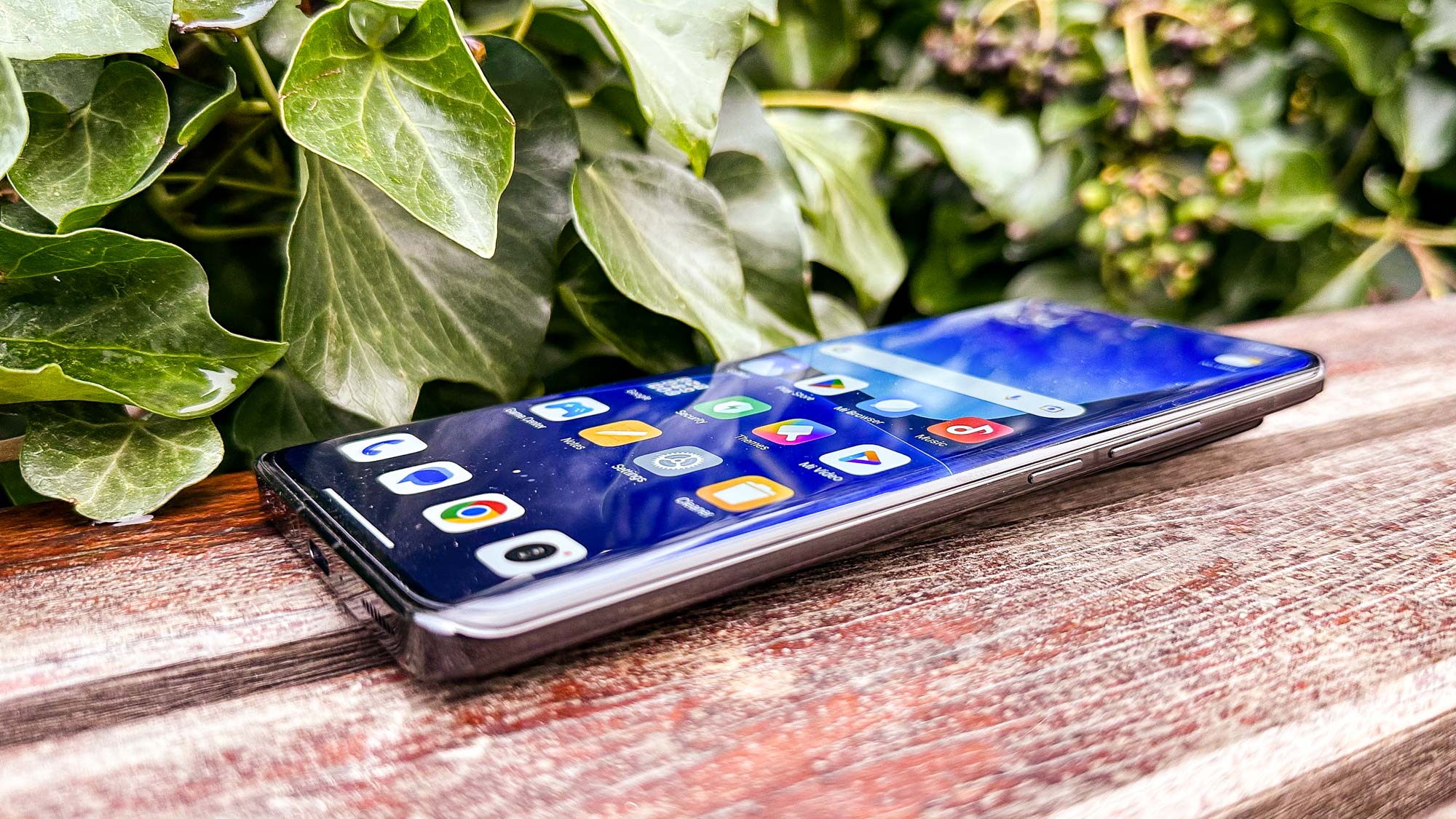
You'll be the right user for the Xiaomi 13 Pro if you prioritize battery charging speed and longevity, a highly customizable and effective camera package and a premium build quality. Unfortunately, it'll be more trouble than it's worth trying to get one in the U.S.. The Galaxy S23 Ultra is a better choice if you want some extra performance, particularly for gaming and other GPU-heavy apps, but for most users who can buy one, the Xiaomi 13 Pro has all the power you need.
We’re also testing out the regular Xiaomi 13, which shares several of the 13 Pro’s best features, but aims for the lower end of the flagship phone market. Take a look at our review if you're interested in what we made of it.

Richard is based in London, covering news, reviews and how-tos for phones, tablets, gaming, and whatever else people need advice on. Following on from his MA in Magazine Journalism at the University of Sheffield, he's also written for WIRED U.K., The Register and Creative Bloq. When not at work, he's likely thinking about how to brew the perfect cup of specialty coffee.
